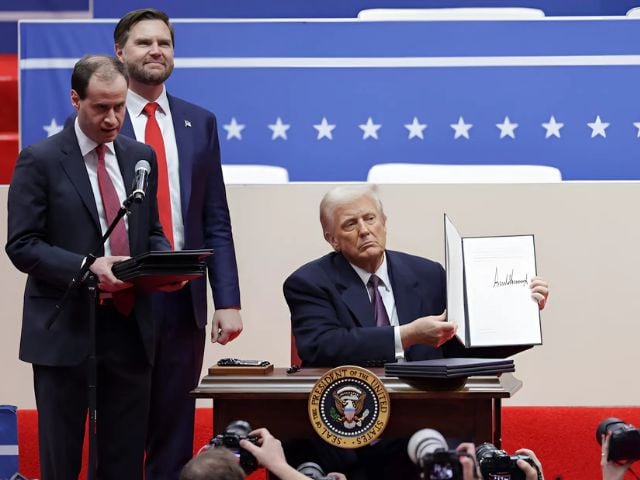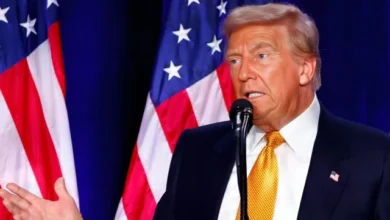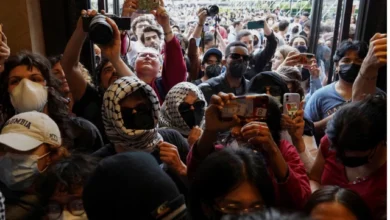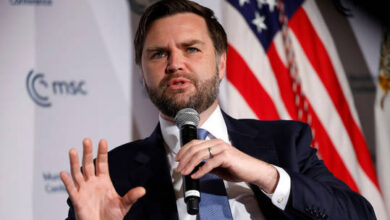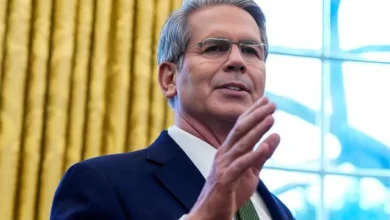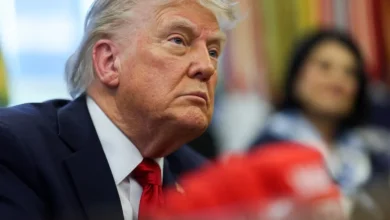On his first day back in office, President Trump issued a sweeping clemency proclamation for roughly 1,500 individuals convicted of crimes related to the January 6, 2021 attack on the US Capitol.
The move follows through on Trump’s repeated promise to absolve those involved in the riot, which aimed to disrupt the certification of Joe Biden’s 2020 presidential election victory.
Trump’s action, announced hours after his swearing-in for a second term, grants pardons and commutations to many of the individuals involved in the Capitol assault. The president has long minimised the significance of the attack, which saw a mob of his supporters storm the Capitol in an effort to prevent Congress from certifying Biden’s win.
Trump’s clemency covers defendants convicted of both violent and nonviolent crimes, including assaulting law enforcement officers and seditious conspiracy.
“We’re freeing these people from unjust punishment,” Trump stated in an Oval Office address, calling the situation “outrageous” and criticising the judicial process surrounding the riot’s aftermath. He described the convicted individuals as “hostages” and expressed hope that those still incarcerated would be released immediately.
Among those who received clemency were prominent figures tied to far-right groups such as the Oath Keepers and Proud Boys. These included Stewart Rhodes, the Oath Keepers founder sentenced to 18 years in prison for seditious conspiracy, and Enrique Tarrio, former leader of the Proud Boys.
Trump’s proclamation also included commutations for individuals such as Kelly Meggs and Jessica Watkins, Oath Keepers members who were sentenced to long prison terms for their roles in the January 6 riot. Some of the names listed in the White House announcement have had their sentences reduced to time served.
The decision has sparked mixed reactions, with many law enforcement officers and Capitol riot investigators critical of the move. More than 1,600 people were charged in connection with the Capitol breach, with more than 700 defendants either serving sentences or completing them.
After taking office, President Donald Trump wasted no time implementing significant changes in his second term, signing multiple executive orders on key issues, including immigration, government reform, and energy policy.
Immigration and refugee policy
Trump declared illegal immigration at the US -Mexico border a national emergency, issuing a series of orders targeting immigration and border security. The president designated criminal cartels as terrorist organisations and moved to end automatic citizenship for children born in the US to undocumented immigrants.
One of his major actions included suspending the refugee resettlement program for at least four months while the administration conducts a review of security measures. He also indicated a potential travel ban for individuals from certain countries, citing concerns over the US’s capacity to absorb large numbers of migrants.
Rolling back Biden’s executive actions
Trump also signed an executive order rescinding 78 actions taken by the Biden administration, focusing on policies related to public health, climate change, and diversity. Speaking at a rally, Trump emphasised his commitment to reversing what he described as “destructive” and “radical” actions. The executive orders included measures targeting the promotion of diversity, equity, and inclusion, as well as protections for LGBTQ+ individuals and racial minorities.
TikTok and regulatory freezes
In a move related to technology, Trump signed an order delaying a ban on the social media app TikTok for 75 days. The decision will provide time for the administration to determine the best course of action regarding the app, which has been under scrutiny for security concerns.
Trump also imposed a temporary freeze on new federal regulations and hiring, while requiring government workers to return to full-time, in-person work, reversing policies that were put in place during the COVID-19 pandemic. Critics have suggested that the freeze on government hires could be a tactic to eliminate longstanding federal employees and replace them with political appointees.
Economic measures
On the economic front, Trump ordered federal agencies to take immediate steps to address rising costs. His orders aimed at reducing inflation included cutting back on climate-related regulations and expanding housing availability. Trump’s office blamed Biden’s policies for causing an inflation crisis and promised to increase the prosperity of American workers.
Climate and environmental policies
Trump’s administration also took steps to roll back climate-related measures, including announcing the US would withdraw from the Paris climate agreement. He reversed Biden’s decision to halt oil drilling in large portions of the Arctic and rescinded electric vehicle mandates. In line with his pro-energy stance, Trump declared a national energy emergency, directing his administration to focus on maximising US oil and gas production.
Public health and WHO withdrawal
On public health matters, Trump signed an order pulling the U.S. out of the World Health Organization (WHO), criticizing the global body’s handling of the COVID-19 pandemic. This move aligns with his ongoing skepticism toward international health organizations. Additionally, Trump nominated Robert F. Kennedy Jr., a known vaccine critic, for the position of Secretary of Health and Human Services.
Government efficiency
In a bid to reform the federal government, Trump established an advisory group aimed at increasing efficiency by eliminating federal agencies and cutting government jobs. The group, known as the Department of Government Efficiency (DOGE), is headed by Tesla CEO Elon Musk. Trump’s broader initiative also includes efforts to investigate past misconduct by federal agencies, which he claims were involved in politically motivated actions during the previous administration.
Free speech
One of Trump’s orders focused on protecting free speech, specifically targeting what he sees as federal censorship under the Biden administration. The order directs agencies to stop suppressing certain online speech, which Trump and his allies argue has been restricted under the guise of combating misinformation.
National energy emergency
On national security and energy, Trump declared a national energy emergency and issued orders to strengthen the US oil reserves while promoting the export of American energy resources. He also pledged to reduce consumer prices by cutting regulations and ensuring energy independence, further distancing his administration from international climate commitments.

